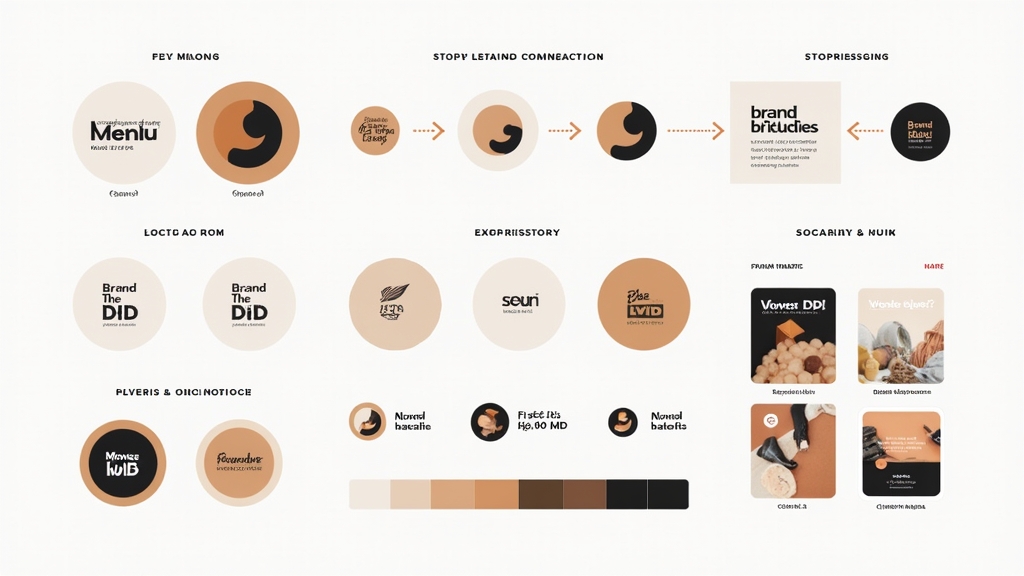Marketing: Brand Identity Creation for Success
Introduction
Creating a strong brand identity is essential for any business looking to thrive in today’s competitive market. Your brand identity is more than just your logo or color scheme; it encompasses how your audience perceives you and what makes you unique. Understanding and developing this identity can significantly impact your marketing efforts, helping you connect with customers on a deeper level. In this article, we will explore the key components of brand identity, the steps to create one, and how storytelling plays a vital role in establishing a memorable presence.
Understanding Brand Identity
Brand identity refers to the visual elements, messaging, and overall perception that define your business. It includes everything from your logo and colors to the tone of voice used in communications. A well-crafted brand identity helps differentiate you from competitors and builds trust with consumers.
Importance of Brand Identity in Marketing
A strong brand identity is crucial because it influences customer loyalty and recognition. When people see consistent branding across various platforms, they are more likely to remember your business. This recognition can lead to increased sales and customer retention as consumers feel connected to brands they recognize.
Key Components of Brand Identity
To create an effective brand identity, focus on these key components:
Logo Design and Visual Elements
Your logo is often the first thing people notice about your brand. It should be simple yet memorable, reflecting the essence of what you offer. Visual elements like icons or images also play a significant role in reinforcing your brand’s message.
Color Palette and Typography
Colors evoke emotions; therefore, choosing the right palette can influence how customers feel about your brand. Similarly, typography should align with your overall image—whether it’s modern or traditional—to ensure consistency across all materials.
Voice and Tone of Communication
The way you communicate with customers shapes their perception of your brand. Your voice could be friendly, professional, or playful depending on who you’re targeting. Consistency in tone helps build familiarity with your audience.
Steps to Create a Strong Brand Identity
Building a robust brand identity involves several steps:
Conducting Market Research
Start by researching competitors and understanding market trends within your industry. This insight will help identify gaps where you can position yourself uniquely.
Defining Your Target Audience
Knowing who you’re speaking to is vital for crafting messages that resonate. Define demographics such as age, interests, and buying behavior so that every aspect of branding appeals directly to them.
Crafting a Unique Value Proposition
Your unique value proposition (UVP) highlights what sets you apart from others in the market. Clearly articulate why customers should choose you over competitors—it could be superior quality or exceptional service.
The Role of Storytelling in Brand Identity
Storytelling enriches your brand identity by creating emotional connections:
Building a Connection with Your Audience
Sharing stories about how your product came into existence or highlighting customer experiences fosters relatability among potential buyers.
Creating a Memorable Brand Narrative
A compelling narrative not only captures attention but also encourages sharing among audiences—making it easier for word-of-mouth marketing to occur organically.
Consistency Across All Platforms
Maintaining uniformity strengthens recognition:
Maintaining Uniformity in Branding Materials
Ensure logos, colors, fonts—and even messaging—are consistent across all platforms including websites, social media profiles & print materials for cohesive branding experience.
Adapting Brand Identity for Different Channels
While consistency is key; adapting content slightly based on platform norms (like casual language on social media vs formal emails) ensures relevance without losing core values associated with branding efforts.
Measuring the Effectiveness of Your Brand Identity
To understand if you’re hitting the mark:
Key Performance Indicators (KPIs) to Monitor
Track metrics such as website traffic growth after rebranding initiatives or engagement rates on social media posts related directly back towards established identities!
Gathering Feedback from Customers
Surveys allow insights into how well audiences perceive current identities! Listening closely provides opportunities for adjustments based upon real-world feedback received!
Case Studies: Successful Brand Identities
Learning from those who’ve succeeded can guide future endeavors:
Analysis of Notable Brands and Their Strategies
Brands like Apple emphasize simplicity while Nike focuses heavily upon inspirational messaging—both have successfully built powerful identities through strategic choices made early-on!
Lessons Learned from Successful Branding Initiatives
Key takeaways include prioritizing authenticity & ensuring alignment between promises made versus delivered outcomes—a must-have formula when aiming toward lasting impressions!
Conclusion
Creating an impactful brand identity isn’t just about aesthetics; it’s an ongoing journey that requires continuous refinement based upon evolving markets & consumer preferences! Embrace change while staying true-to-essence—this balance leads towards success over time!
📢 Explore More: Continue Your Journey!
If this article helped you understand branding better, check out “The Power of Visual Storytelling!” It covers how visuals enhance communication strategies effectively.














![NEEWER 55W 18"/45cm Ring Light Kit [New Version], 5600K Dimmable ...](https://m.media-amazon.com/images/I/414QLqvZWLL._AC_.jpg)








